Are you confused about choosing the right size chair cane you need for your next project?
There are a lot of different chair cane gauges and sizes used in chair cane weaving. So, selecting the right size can get a bit overwhelming.
A size too small might fail because it’s not sturdy enough. But a size too large will be difficult to work with, filling the holes before you are finished with the seven weaving steps.
What’s the best way to determine what size chair cane to use on your next project?
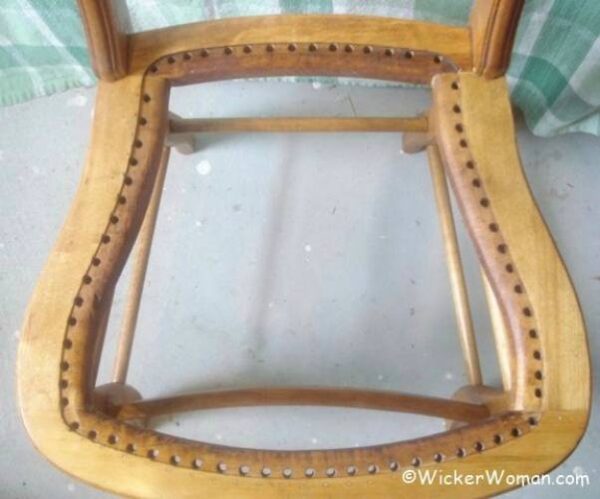
Determine the best size cane to use
The usual way to determine the best gauge of cane to use is to first measure the diameter of the drilled holes. Then measure the distance from the center of one hole to the center of an adjacent hole.
After you have both measurements, compare them using a table the cane and basket supply companies have in their online catalogs.
Based on your two measurements, those tables have the correct size cane to order, making it easy to place your order.
But there’s another way that I’ll share with you for a quick and easy method the English chair caners have been using for years and years.
I first ran across this simple way to choose what size chair cane to use when reading my 1990 reprint of the 1988 Chair Seating– Techniques in Cane, Willow, Rush and Cords by English authors and seat weavers, Kay Johnson, Olivia Elton Barratt, and Mary Butcher.
This article may contain affiliate links, which means that if you click on a link and then purchase an item, I may receive a commission at no cost to you. As an Amazon Associate, I earn from qualifying purchases.
Best Chair Caning and Seat Weaving Instruction Book
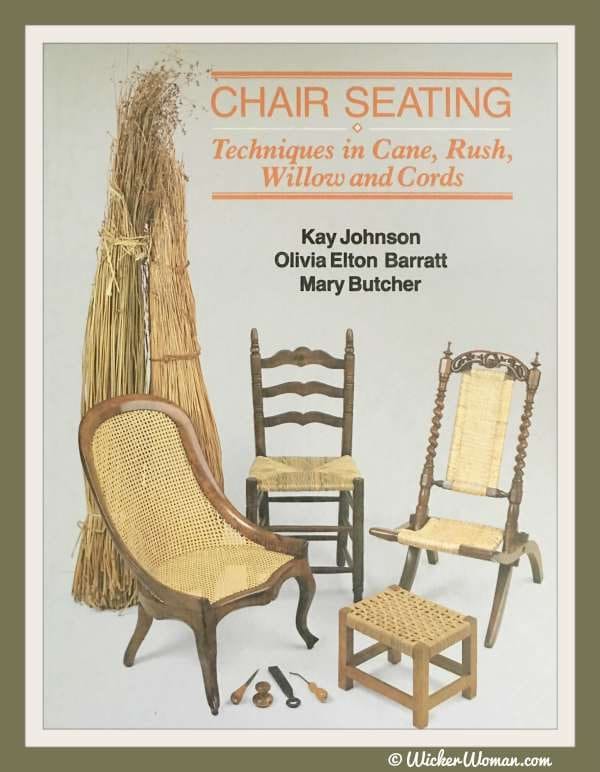
Chair Seating Techniques by Johnson, Barratt and Butcher is by far, in my opinion, the best chair caning and chair seat weaving book ever made!
It’s very, very detailed in every type of chair seat weaving you can imagine and includes easy-to-understand text (although they use many English terms and the metric numbering system) with delightfully clear illustrations.
Quick and Easy Method for Correct Cane Size
As most of you caners know and as I state on the Chair Caning Instructions page, the size of cane to use in your chair caning projects depends on two things. The diameter of the drilled holes and the distance between center hole to center hole, correct?
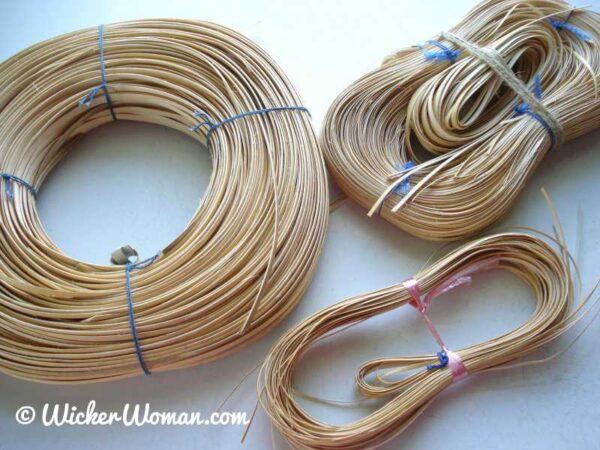
Normally, after you take those measurements, you would either go to the website of your favorite cane and basket supplier and look it up on their conversion tables or consult the tables in their catalogs.
Well, now there’s a much easier way to do it!
You can bypass all that fuss and calculate the easy way of finding out what size chair cane to use.
Just simply count the number of holes within a six-inch interval on the side rails!
Since not all holes are drilled a consistent and accurate distance apart, it’s wise to take the measurement in several different places along the rails and then average those totals.
Quick and easy cane sizing method to memorize
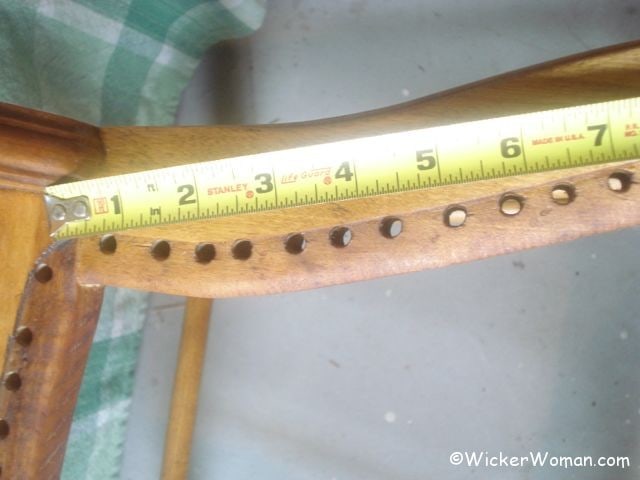
Now that you know how many drilled holes there are in the six-inch span you can use the simple, easy method below to determine the correct gauge cane to use for your project!
If a partial hole is within the measurement, then count that too. Then, for every six inches that has the number of holes below, buy the size cane listed on the right:
12 holes = Fine Fine Cane, 2.25mm
11 holes = Fine Cane, 2.50mm
10 holes = Narrow Medium, 2.75mm Cane
9 holes = Medium Cane, 3.0mm
8 holes = Common Cane, 3.50mm
The size cane you need for the binder cane would be:
Narrow Binder 4 1/2MM (5/32″) for small drilled holes and Medium Binder 5 1/2M (7/32″) for larger
What size chair cane to use? — now you know!
Memorize the table list above and you’ll always know what size chair cane to use for your chair caning projects.
You’ll never be dependent on those cane gauge conversion measurement tables again!
You’ll be able to order the correct size cane anytime, right off the top of your head from now on!
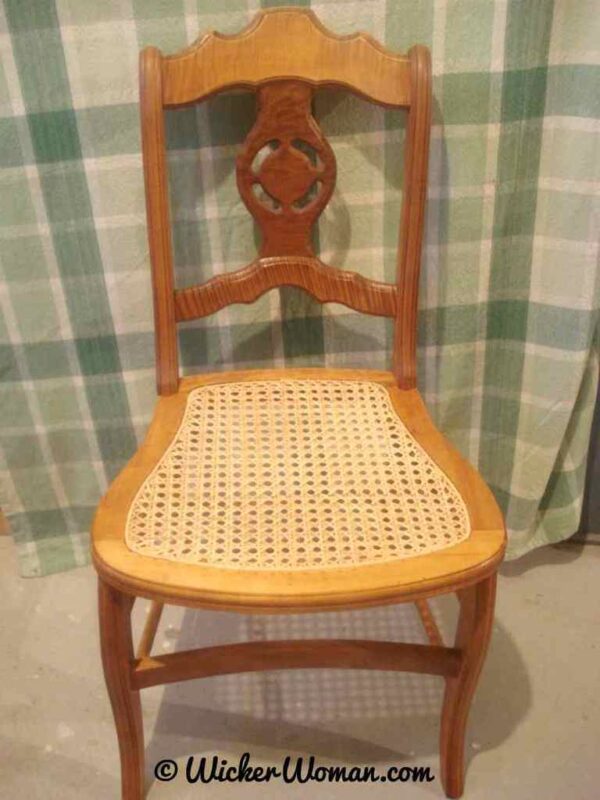
Thanks so much to English seat weavers; Kay Johnson, Olivia Elton Barratt, and Mary Butcher for writing such a wonderfully clear, easily memorizable caning-size guide for us.
I had the pleasure of meeting these fantastic and ever-so-talented ladies in 2006 when I went to England for two weeks on a McKnight Fellowship Grant.
I really wish I had thought to bring along my own copy of the book so I could get their autographs, darn.
Is this method of choosing the right size cane for your project new to you? Or are you already using this method in your weaving?

What are your thoughts about this blog post?
Leave your comments below and share with your social networks!
~~Live Well, Laugh Often, Love Much ~~
Happy Weaving, until next time!


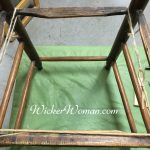
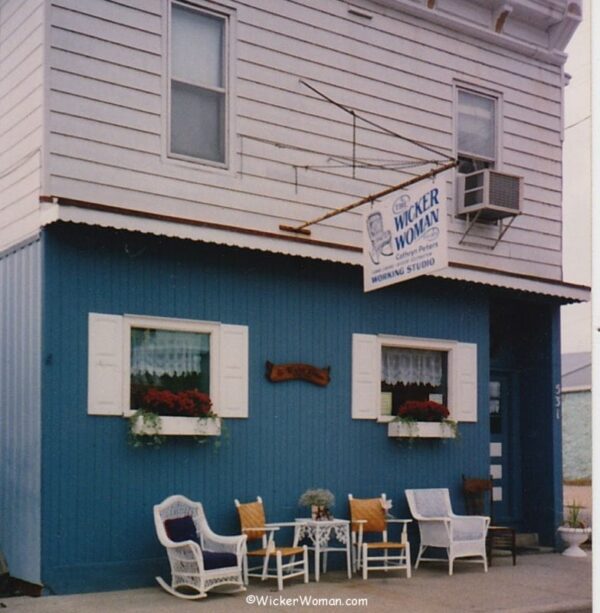
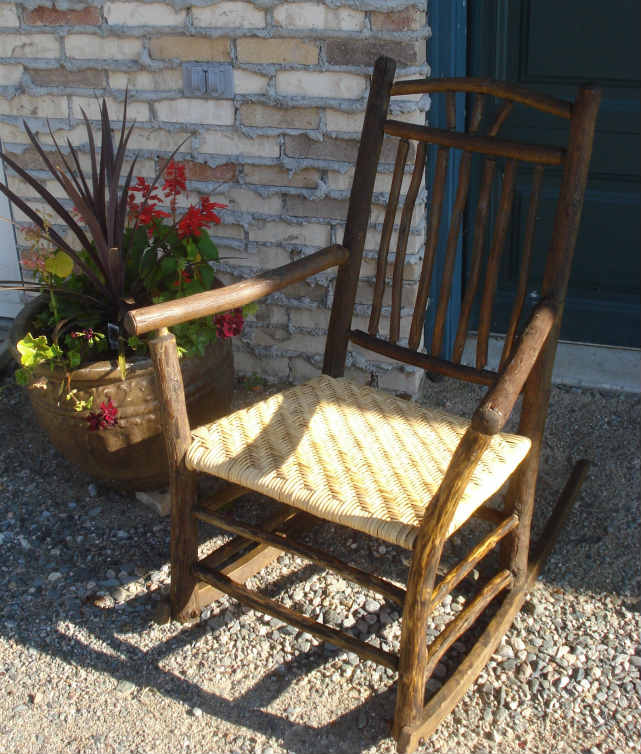
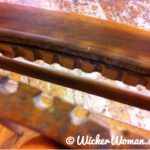
It’s a while since I caned a chair and I can’t remember if you use different sizes of cane for settings and weavings.
Hello Fiona,
So nice to hear you are getting back into the swing of chair caning! No, it’s not necessary to use two different sizes of chair cane strands to reweave a cane seat. We here in the US rarely use two different sizes but they frequently do in England and other countries. For complete instructions and caning hints, be sure to check out my Chair Caning Instructions page and also the How-to Videos pages. The Articles tab at the top of any page will take you to many helpful weaving articles besides those two.
Hi there! If I am recaning a chair with a circular seat, how do I measure for the cane size? TY
SG,
In this case, since you are working with a round seat, it’s best to use the method of taking the measurement of the diameter of the holes and then the measurement of the space from center-hole-to-center-hole and using the chart to determine the gauge cane you need. Thanks for asking and good luck on recaning that chair!
Where can I purchase binder cane alone for chairs caned with fine and fine fine cane?
Thanks for asking the question, you can purchase wide binding cane from any of the companies listed on my Cane and Basket Supplies Directory™.
I have updated the post to include the answer to your question about what size binder cane to use also.
Here’s the answer, rather than going with the size of the cane you are using, it’s best to go with the size of the drilled holes. Because the object of using the binder cord is to cover up the holes to give the seat a more polished and finished look.
Narrow Binder 4 1/2MM (5/32″) for small drilled holes and Medium Binder 5 1/2M (7/32″) for larger holes.
Hi I just measured my chairs and within each six inches I counted fifteen holes. Im guessing That I sould use the fine fine cane. Thanks, Gladys
Hi Gladys,
If you have over 12 holes per six inches then you should use super-fine (2MM), not fine-fine (2.25MM). I didn’t list that small gauge here but check with the supplier to see if they even carry it anymore. Weaving that chair with the tiny, tiny holes is going to take you a looooong time! How many drilled holes are there altogether? Probably over 80, right?
I’m building a wooden seat for a vintage airplane. It will be 8 holes per 6 six inch. Holes will be 7/8 inch apart center to center. Cane will be Common Cane, 3.50mm. So, what size diameter should I make the holes? Thanks, Vincent.
Hi Vincent,
Thanks so much for asking this question because it brought up a change I need to make with this post. I can’t believe I didn’t reference my Chair Caning Instructions page for table that gives the diameters of the holes, distance from center hole to center hole and the appropriate size caning to purchase! But as you will see when you read that page, the proper dimension holes you will need for your project is 5/16″ when the holes are going to be 7/8″ apart. Good luck on your project sounds like fun! Did you see on my About page that I made four reproduction wicker/cane seats for two Sikorsky S-38 amphibian airplanes back in the late 1990s? The first pair of passenger seats was for the Johnson Wax Company’s plane and the second pair of seats was for Buzz Kaplan, owner of Born Again Restorations who made the Johnson plane and then one for himself called, Osa’s Ark.